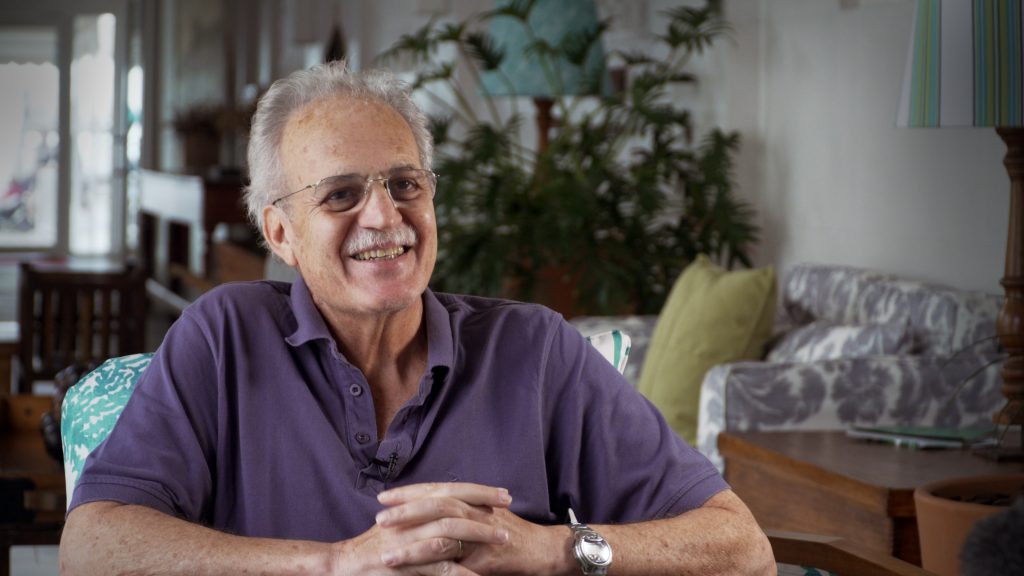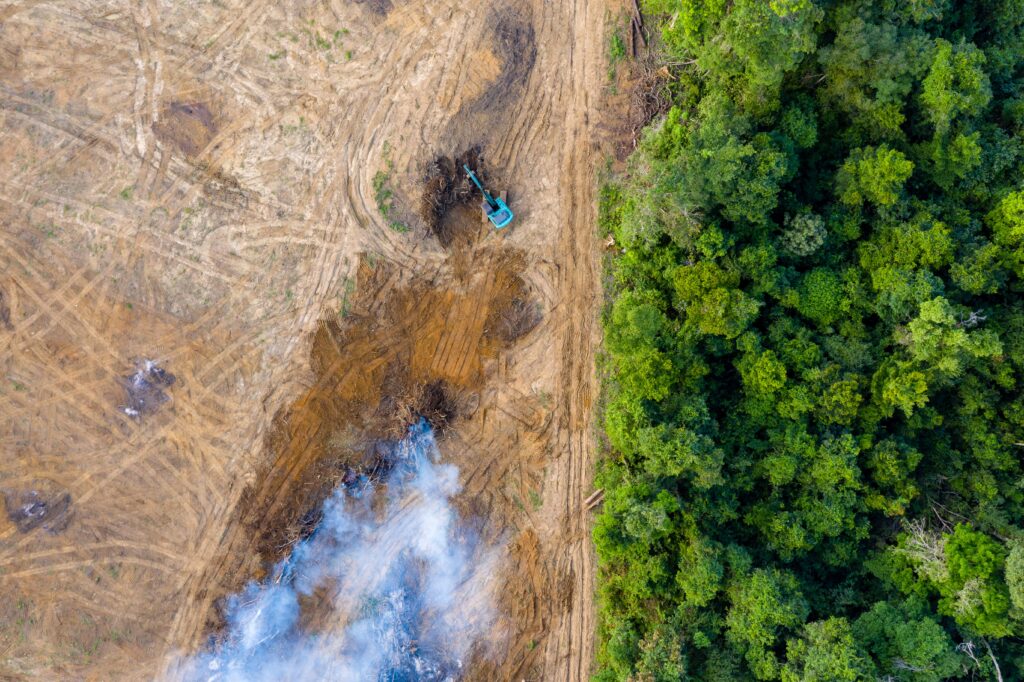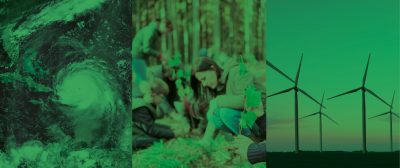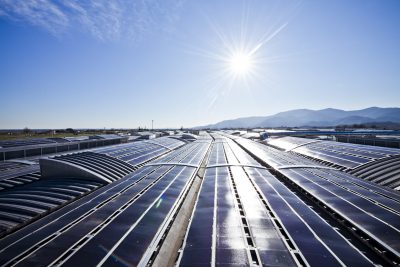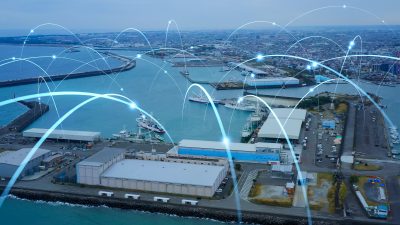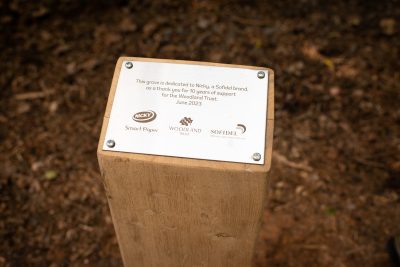Brazilian meteorologist Dr. Carlos Nobre has been studying the Amazon rainforest for decades. He tells Future that the destruction of the forest leaves the whole planet at a tipping point – but that it’s not too late to prevent disaster
On 2 November 2021 at the COP26 climate summit in Glasgow, Scotland, more than 100 world leaders pledged to end – and crucially reverse – deforestation by 2030. The announcement was considered a significant development in order to finally bring climate change under control because felling trees depletes forests that absorb huge amounts of the warming gas CO2.
Brazil – where vast swathes of the Amazon rainforest have been felled – was among the signatories at COP26. The move, which pledges $19.2bn of public and private funds, will have been undoubtedly welcomed, albeit with some caution, by Dr. Carlos Nobre, one of the world’s most foremost experts on deforestation and its effects. Nobre will also have been acutely aware that a previous pledge in 2014 did not significantly slow deforestation, noting governments must now actually deliver on what they promise.
For decades, Nobre has had to endure empty oaths and greenwash-filled statements that have done little to prevent a devastating deforestation in his homeland – yet he remains hopeful that the situation is, still, not too late. Prior to the COP26 announcement he told Future, why he believes this.
You have discussed the “tipping point of the Amazon” in the past. Has it already “tipped”, or are we not yet at that juncture?
Carlos Nobre: If not helped the Amazon forest will be negatively affected within the next 30-50 years. Even if we could stop deforestation or even meet the 2015 Paris Agreement targets of 1.5°C it’s still not enough to help solve the issues we’re facing today. As of now, the global warming over the entire Amazon forest stands at roughly 1.4-1.5°C, but global warming is more severe as more frequent droughts in the Amazon – the result of the warming of the tropical North Atlantic – are occurring.
In the 1990s you conducted pioneering experiments that collected data from tall outposts dotted around the Amazon. Why should the whole planet be concerned about your long-term findings?
Carlos Nobre: Between 1993 and 2000 [as part of Large-Scale Biosphere-Atmosphere Experiment in Amazonia, LBA] we carried out the most comprehensive experiment in the Amazon – we had 13 sites with towers, some in the forest and some on pastures. In the experiment, we wanted to compare how the forest and the pasture interacted with the atmosphere, as well as measuring the exchanges of water vapor, heat and carbon dioxide, as well as many other measurements.
Out of those 13 towers we installed, five are still running today. We have a very good understanding now that when you replace forest pastureland with grass it is warmer – the maximum temperature is 2-4°C warmer than the pastureland. Also, most importantly, are the transpiration rates called evapotranspiration. During the dry season, the pastureland is much smaller –1/3 of the transpiration of the forest. A unique characteristic of the tropical forests of the Amazon is that they keep recycling water all year-round. But, in the equatorial Amazon, from the Andes to the Atlantic, the forest loses more water vapor recycling capacity during the dry season, which recycles water very efficiently.
We are already seeing a reduction in rainfall during the dry season. These experiments in the Amazon demonstrated that the rainfall is losing this capacity to recycle water. That’s we’re very close to the tipping point, because there is no longer a climate envelope for the forest. The data is very worrying.
Why does the planet need that tree cover? Why will the Amazon, if destroyed, release 200 billion tons of carbon over the next 30 years?
Carlos Nobre: The Amazon is currently in a very high deforestation rate: 18% of the total forest has been cleared while another 17% is in several stages of deeper degradation. However, in the remaining forests, below and above ground, the biomass is roughly between 150-200 billion tons of carbon.
We calculate that if the tipping point is exceeded then the climate will have 4-6 months of dry season. So, tree mortality will increase, and this new degraded ecosystem would take 30 to 50 years to take over.
Are we too late already? Or is there something still that the business world can do to mitigate this risk?
Carlos Nobre: We must stop the traditional model of occupying the forest with croplands and farms. Some scientists have said we have already crossed the tipping point in Southern Amazon but there are still many abandoned areas, 23% in the Brazilian Amazon is pastureland which has been neglected. But in many pasturelands, we are seeing the regrowth of a secondary forest. There is hope if we have a moratorium on forest degradation, then we have a large scale of forest restoration – natural regeneration.
“We must stop the traditional model of occupying the forest with croplands and farms. Some scientists have said we have already crossed the tipping point in Southern Amazon”
Dr Carlos Nobre
In many large areas, there will be natural regeneration, in some other areas, particularly in the Southern Amazon, we need to restore the forests, this costs between $1000-2,000 per hectare.
There must be funding from financial sectors, corporations, countries, particularly developed countries that come to an international agreement to remove carbon dioxide from the atmosphere. We need tens of billions of dollars a year to restore large areas in the global tropics.
Although a man of science, it must be hard for you to not get emotive about this topic?
Carlos Nobre: I do get emotional. We are trying as hard as we can to move towards zero deforestation. It is very clear that you do not need to increase deforestation to increase farming production – it’s just a matter of increasing productivity a little. Cattle productivity in the Amazon is extremely low, 1.3 heads of cattle per hectare. You could easily have 345 heads of cattle per hectare. That is not intensive. So, there is no need to increase deforestation in Brazil. That is why we remain optimistic.
“I do get emotional. We are trying as hard as we can to move towards zero deforestation. It is very clear that you do not need to increase deforestation to increase farming production – it’s just a matter of increasing productivity a little”
Dr Carlos Nobre
Less than ten years ago, the annual deforestation rates in Brazil were less than 5,000 square kilometers. Still high, but far less compared to, say, 27,000 square kilometers in 2004, the second largest year of deforestation [in 1985, 29,000 sq km of forest was cleared]. Colombia reduced deforestation for two years, but unfortunately, the deforestation rates increased in 2020. Venezuela also increased. In fact, in all the other Amazonian countries as well as Ecuador, Colombia, Peru, Bolivia, and Brazil, deforestation rates are increasing. In Brazil, they exploded in the last three years, with more than 11,000 square kilometers in 2020. It will probably be about the same this year in terms of forest degradation and a record-breaking number of fires. So yes, we really are concerned.
On the other hand, I am still hopeful that, because of the guidance science is providing, we do not need to increase deforestation to keep levels of food production in the world. In the tropics we can tremendously increase productivity. And, of course, 30% of global emissions of greenhouse gases come from the agriculture sector, via methane emissions from cattle – the largest percentage within the agricultural sector.
“I am still hopeful that, because of the guidance science is providing, we do not need to increase deforestation to keep levels of food production in the world. In the tropics we can tremendously increase productivity”
Dr Carlos Nobre
Why do you do what you do? Why is your passion undimmed for the forests?
Carlos Nobre: During my undergraduate years, when I was studying electronics engineering [at Instituto Tecnológico de Aeronáutica], I had the opportunity to visit the Amazon during summer vacation when I was 21. I went all the way to the north, close to the border between Brazil and French Guiana. In a second year, I went all the way to the west, the border between Brazil and Peru. Traveling made me realize how magnificent the forest was even though I did not know anything about forests, biodiversity or biology at the time.
I fell in love with them. And then after coming back from those trips, I decided I wanted to dedicate my life and professional life to the Amazon. After I graduated in 1974-1975, I went to the Amazon and found a job as an engineer in Brazil’s National Institute for Amazonian Research. I was hired to help with the maintenance of laboratories.
I later decided to quit research engineering to become a scientist in natural science. In 1977, I went did a PhD in Meteorology, at the Massachusetts Institute of Technology MIT.
Starting in 1983 I dedicated my whole life to the Amazon to understand how the forest interacts with the atmosphere, how important they are for climate, how it affects climate change and how deforestation also affects it.
What positive change are you seeing?
Carlos Nobre: I am starting to see a global movement, particularly from the youth. This new generation, who will be adults in less than 10 years, will start having much more power in the political system. I’m hopeful that we can find ways to convince tropical countries to find a sustainable pathway to protect the remaining forests. So, although I’m very concerned, I’m not pessimistic.
We need to demonstrate the feasibility of economic innovations in the Amazon. The standing forest has a much higher economic value than it does for beef meat or crops, because it has the highest biodiversity species diversity on the planet – more than 10% of all known species of trees, plants and animals are in the Amazon rainforest. We have these so-called ‘agro-ecological’ systems, which provide a much better quality of life and wellbeing for people. These systems can produce forest products from the biodiversity: acai berries, cacao, Brazil nuts, oils – plus the potential for pharmaceuticals and many other bio products is gigantic. It’s hardly been tapped into. Modern science, merging with traditional knowledge from the indigenous people who have been living with this ending forest for thousands of years – with a high quality of life – can help us to learn much more about the biocultural diversity of the Amazon. We have to bring this new economic pathway for the Amazon. That would support and maintain the forests.
